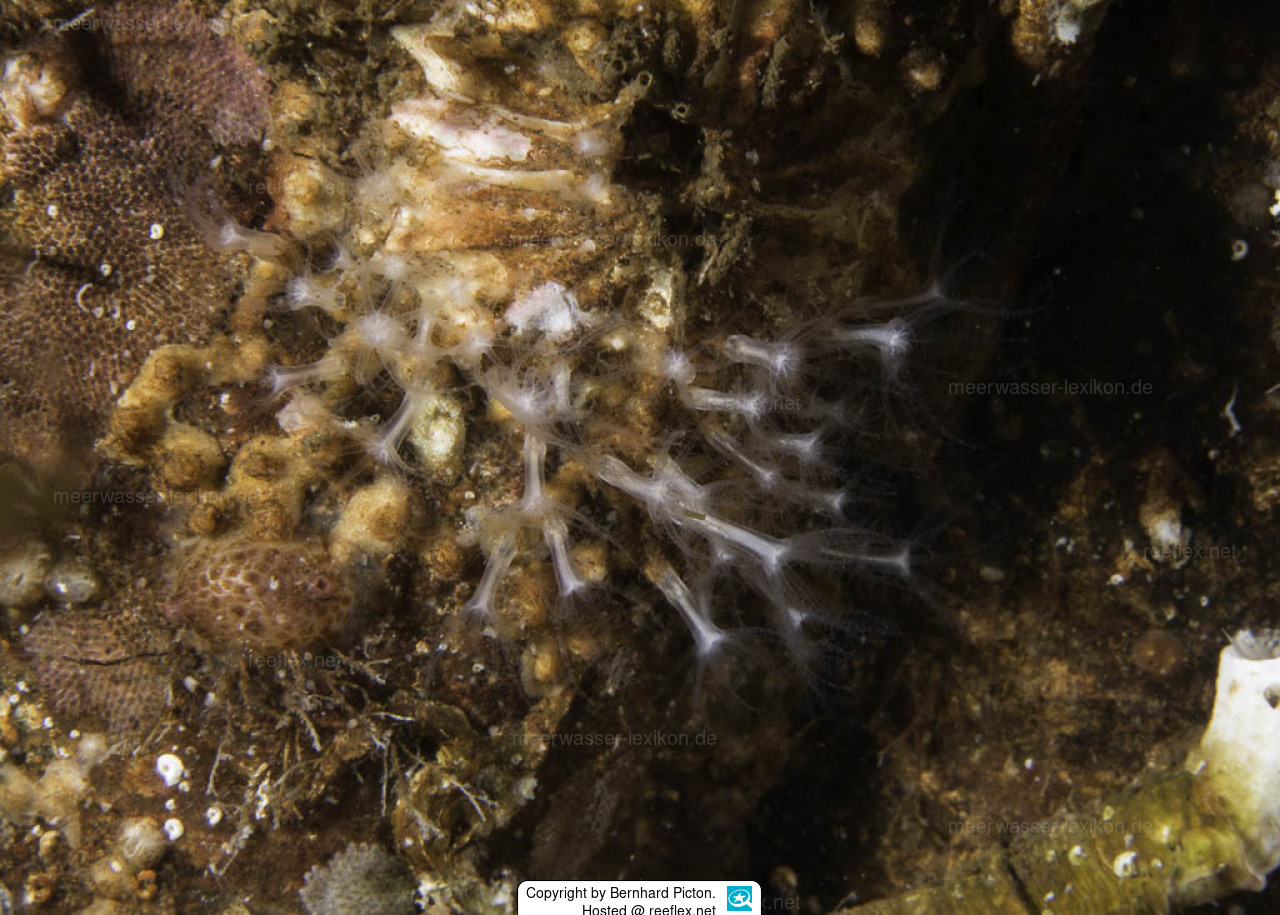Info
This small octocoral forms an encrusting network of 2mm wide flattened spurs on rocks and shells.
Sometimes the stolons fuse to form a continuous sheet.
The polyps, including the tentacles, are up to 10mm in size and are semi-translucent white.
The stolons are usually red, but may be yellow or colorless and contain sclerites.
Most commonly found in sheltered locations such as sea bays, in small caves, and under overhangs, the tube coral can tolerate lower salinity.
A special predator of Sarcodictyon catenatum is the tree snail Duvaucelia lineata (formerly Tritonia lineata).
Synonyms:
Clavularia catenata (Forbes, 1847)
Clavularia filiformis (Sars, 1856)
Evagora catenata (Forbes, 1847)
Rhizoxenia filiformis Sars, 1856
Sarcodictyon agglomerata Forbes & Goodsir, 1851
Sometimes the stolons fuse to form a continuous sheet.
The polyps, including the tentacles, are up to 10mm in size and are semi-translucent white.
The stolons are usually red, but may be yellow or colorless and contain sclerites.
Most commonly found in sheltered locations such as sea bays, in small caves, and under overhangs, the tube coral can tolerate lower salinity.
A special predator of Sarcodictyon catenatum is the tree snail Duvaucelia lineata (formerly Tritonia lineata).
Synonyms:
Clavularia catenata (Forbes, 1847)
Clavularia filiformis (Sars, 1856)
Evagora catenata (Forbes, 1847)
Rhizoxenia filiformis Sars, 1856
Sarcodictyon agglomerata Forbes & Goodsir, 1851







 Dr. Bernhard Picton, Großbritannien
Dr. Bernhard Picton, Großbritannien

